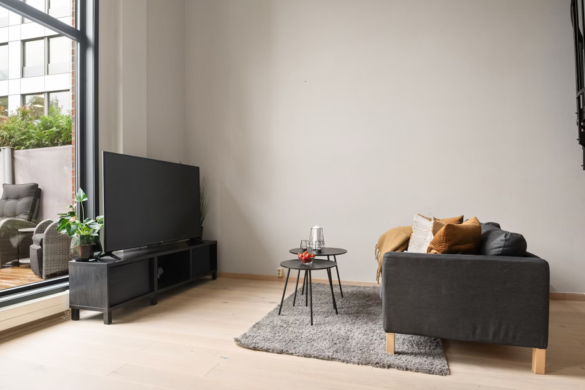 With the availability of RTA cabinet accessories online, kitchen storage and utility enhancement have become quite simple. These useful upgrades not only take up less space but also make homes more efficient day-to-day. From pull-out shelves to drawer dividers, the right accessories transform ordinary cabinets into highly organized spaces.
With the availability of RTA cabinet accessories online, kitchen storage and utility enhancement have become quite simple. These useful upgrades not only take up less space but also make homes more efficient day-to-day. From pull-out shelves to drawer dividers, the right accessories transform ordinary cabinets into highly organized spaces.
With the right combination, even basic cabinetry can be turned into a very functional space. Small improvements provide noticeable changes in your daily life. Homeowners looking for quality options can explore RTA kitchen cabinets online to find accessories that perfectly complement their existing setup. Let’s explore some of the most practical additions that can enhance any kitchen.
Pull-Out Shelves for Effortless Access
Pull-out shelves work wonders for deep cupboards. Rather than digging into the back, the entire shelf can be slid out. This is a convenient way to access cookware, pantry items, or cleaning supplies. Movable rails provide a customized shelf height so larger pots or small containers can fit. They help keep all your items organized and in one place, reducing the overall clutter in whichever storage unit you have them in.
Drawer Organizers for Tidy Spaces
Kitchen drawers tend to become overcrowded very quickly. Drawer organizers help eliminate such mess by providing demarcated space for utensils, gadgets, and cutlery. These inserts keep everything where it belongs, making searching for things quicker and easier. There are a lot of materials, types, and styles that allow accommodating different shapes and sizes of drawers. This leads to a more organized and efficient workspace.
Lazy Susans for Corner Cabinets
Corner cabinets are a spot that often looks attractive, but they are also very useful. The concept of a Lazy Susan solves this dilemma with a spinning platform holding spices, canned goods, or small appliances. The spinning item guarantees everything is reachable without needing to rummage through heaps. Full-circle and half-moon options allow flexibility with hinge style. Lazy Susans allow homeowners to maximize every inch.
Under-Sink Organizers for Maximum Utility
Under the sink easily turns into a mess with pipes and cleaning products. There are specially shaped under-sink organizers that fit around plumbing and that might work well as racks or baskets for bottles or sponges. They usually come with adjustable-shelved sliding trays for added flexibility. Because cleaning supplies are always stored standing up and away from each other, homeowners are able to quickly find just what they are looking for. According to home organization experts, proper under-sink storage can significantly improve kitchen functionality.
Pull-Out Trash and Recycling Bins
Visible trash bins can overshadow a kitchen’s look. Pull-out options conceal the waste containers within a cabinet while ensuring that you can access them with ease. The bins slide effortlessly on rails, and some even have a built-in compartment for recycling. This keeps everything organized and contributes to a cleaner environment. Pull-out functions release the floor space for other purposes.
Spice Racks That Save Space
Shelves filled with spices can confuse and create a mess. Spice racks with dedicated slots provide an organized display for the bottle collection, meaning labels are always facing forward and neatly categorized. Vertical racks are mounted on the inside of cabinet doors, while pull-down models provide easy access inside of cabinets above countertops. This design shifts spills away and allows users to quickly locate their ingredients.
Appliance Garages for Clutter-Free Counters
Many small appliances, like toasters and mixers, occupy the counter space. Appliance garages provide a space within a cabinet for the appliances, with a roll-up or hinged door to close it off from view. This method keeps the actual gadgets around but out of sight, providing less visual clutter. With more space for food prep and a neater look, appliance garages function in kitchens big and small.
Baking Sheet and Tray Dividers
Baking sheets, trays, and cutting boards should be stored vertically to save space and keep them from getting damaged. These allow you to keep things upright in cabinets and provide quick access when you want to pull something out. They have adjustable slots for everything from muffin tins to serving platters. This technique prevents scratches on surfaces and helps to keep everything organized. Food preparation, especially baking and cooking, is more effortless when the tools are close by.
Wine and Stemware Racks for Entertaining
Wine lovers appreciate racks that offer horizontal cradles for bottles to maintain flavor and moisture in corks. Stemware racks hold the glasses upside down, which almost eliminates dust and prevents breakage. These two accessories nestle in cupboards or under shelving, making room for other stuff elsewhere. These solutions add polish while allowing for safe storage. Having drinks and glassware on hand makes entertaining guests even easier.
Conclusion
This is mainly due to the growth of e-commerce, which has made it easier for homeowners to find and purchase aesthetic as well as functional RTA cabinet accessories to use in organizing their kitchen space. Considerate additions, like pull-out shelves or spice racks, make everyday tasks easier. We can all create a more effective, aesthetically pleasing home by selecting usable items. Small changes yield long-term rewards for busy households.



